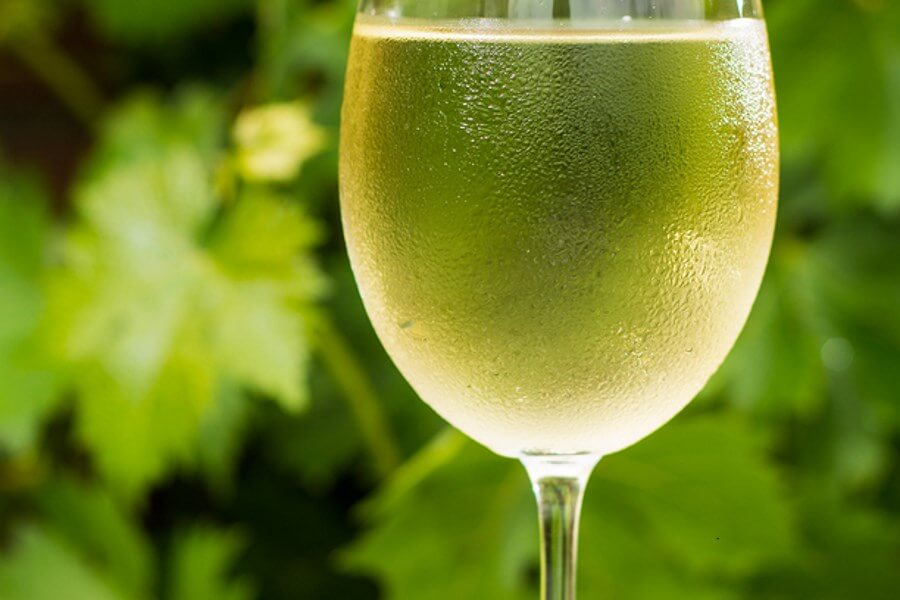Did you know the temperature you serve wine affects its flavor and fragrance? For the ultimate indulgence, follow our wine temperature guide below to make sure you serve wine at its optimal temperature; ensuring you the best experience.

Share this article
The Wine Temperature Guide:
Full–Bodied Reds
A full-bodied red wine has a high tannin and alcohol level over 13.5%. As a result, the wine is rich, sophisticated and intense in flavor. Syrah, Tannat, and Carbernet Sauvignon are examples of full-bodied red wine.
Serve full-bodied reds at 59-64.4°F (15 – 18°C) to soften the wine’s strong tannin and sharp components. This will draw out the bouquet and wine flavors.
Medium-Bodied Reds
This wine has 12.5-13.5% alcohol content, moderate tannins and acidity. Examples include Carignan, Grenache, Valpolicella Blend and Carbernet Franc.
Serve medium-bodied reds at 57.2 -63.6°F (14 -17°C). This temperature will break up the wine’s tannins and alcohol. As well as release the delicious aroma and flavor of the wine.
This wine is lighter, crisper and more watery in the mouth. It also has a low alcohol content. It is best drunk young, (within the first 1–2 years of the vintage date) because of the enhanced acidity and freshness.
Light–Bodied Reds
Light-bodied reds have delicate red fruit flavors. As well as low tannins, bright acidity, and low alcohol content (below 12.5%). Examples include Schiava, Gamay, and Pinot Noir.
To make the wine crisp, refreshing and intensify its flavor, serve light-bodied reds at 53.6 -60.8°F (12-16°C).
Rosé Wine
Contrary to popular belief, rosé wine is not a product of mixing red and white grapes. It is from red “black” grapes vinified in the same way as white wines. But, its flavor profile is similar to that of red wine, with 10.5% – 15% alcohol content. Examples include Grenache Rosé, Pinot Noir Rosé and Pink Moscat.
Rosé wine can either be dry, fruity or full-bodied. To ensure you get the rich red fruit or light, refreshing wine flavors, serve rosé chilled at 53.6 – 59°F (12-15°C). Note: The drier the rosé, the lower the temperature should be. While the sweeter the rosé, the higher the serving temperature.
Properly serving wine is a crucial and amazing part of setting up your own wine tastings with friends!
Sparkling Wine Temperature Guide
Sparkling wine has bubbles because of the large quantity of carbon dioxide in it. Champagne is the most famous sparkling wine. It is from the Champagne region of France. However, other regions in the world produce sparkling wine including white, rosé and red.
The sparkling wine’s serving temperature depends on the specific wine. A low temperature of 46.4°F (8°C) is excellent for serving sweet, fragrant, white sparkling wine such as Dry Prosecco. A higher temperature of 50-53.6°F (10-12°C) is ideal for serving red and sweet sparkling wine, such as Brachetto d’Acqui.
A high temperature of 57.2°F (14°C) is great for serving dry sparkling wine, with high tannins such as Most Cava and Most Brut. This is because the high temperature disintegrates the tannins and releases the wine fragrance. To bring out the rich flavors and the Champagne bouquet, serve at 46.4-50°F (8 -10°C).
Aged sparkling wine is best served at temperatures of 53.6°F (12°C). This allows the intricate aromas of the wine to form.
Light-Bodied Dry Whites
This wine is lighter, crisper and more watery in the mouth. It also has a low alcohol content. It is best drunk young, (within the first 1–2 years of the vintage date) because of the enhanced acidity and freshness. Examples include Pinot Grigio, Pinot Bianco, and Sauvignon Blanc.
Serve light-bodied dry whites at 44.6 – 50°F (7-10°C) to allow the light, spicy wine flavors to appear. This allows you to appreciate the crisp and refreshing aspects of the wine.
Full-Bodied whites
Full-bodied whites have vibrant flavors. As they are made using the oak-aging process, which give the wine a creamy and nutty flavor. Full-bodied whites also have higher residual sugar content, higher alcohol and low acidity. Examples include White Rioja, Chardonnay, Trebbiano and Viognier.
To enhance the rich, mature wine flavors, serve it cool between 50-57.2°F (7-10°C).
Fortified Wine
Fortified wine is sweeter and has a higher alcohol content than the average bottle of wine. You achieve fortification by mixing wine with a spirit such as brandy. This increases the volume of alcohol in the wine. Though high in alcohol, fortified wine is fragrant, delicious and presents complex flavors.
To highlight the aroma and sweetness of young, light and fruity fortified wine, serve at 60.8–64.4°F (16-18°C). Increase the freshness of medium-bodied fortified wine by serving the wine at 50-53.6 °F (10-12°C). And serve older, complex and heavier wine at 48.2 -51.8°F (9-11°C) to enhance the sweetness and alcohol of the wine.
Always remember that, if you serve a red wine when it is too warm, the alcohol taste becomes overpowering. And, white wine that is icy will be sour. Following our wine temperature guide will help you get the most out of wine.